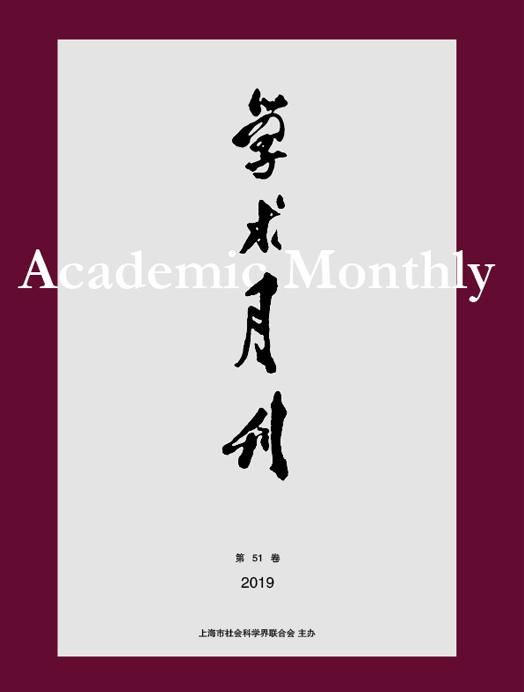Citation:
Li’na JIN. Marx and Arendt on the Jewish Question[J]. Academic Monthly, 2021, 53(3): 27-34.

Marx and Arendt on the Jewish Question
-
Abstract
The Jewish question has never been a fixed or a well-directed question, but the “Jewish question” has always been a question in history. How to solve the “Jewish question”? Starting from the historical reality of the nation-state in the 19th century, Marx reflected on and criticized Powell’s religious and secular solutions, then concluded that the solution to the Jewish question must be achieved in the context of the liberation of all mankind. By reducing religious question to political question and political question to the civil society’s pursuit of money, Marx believed that the Jews could be truly liberated only after the all-round development of people was achieved, that is, after they were freed from the fetters of capital, this is a “socialist solution”; Arendt, on the other hand, starting from the reflection on totalitarian rule and the possible way of constructing a “Jewish homeland”, and came up with a “republican solution” based on the “committee system”. According to Arendt, this system is not only a solution to the Jewish question, but also a possibility to replace the political form of nation-state and Nazi totalitarianism, and it represents the inner hope of a new type of political philosophy.
-

-
References
-
Access
-
-
[1]
Kangzhi ZHANG
. The Predicament of Emancipation and A New Starting of Historical Choice. Academic Monthly,
2019, 51(9): 70-81.
-
[2]
Licheng QIAN
. Memory Studies: Beyond the Nation State and Cosmopolitan Frameworks. Academic Monthly,
2021, 53(11): 132-139.
-
[3]
Yuan HAN
. Feminism and Nationalism: Women and the National State in the Anti-Japanese War Red Classics Novels and Its Screen-adaptations. Academic Monthly,
2019, 51(4): 139-148, 173.
-
[4]
Zhixiang JIAN
, Rong MA
. Language, Construction of Nation-state, and Language Policy. Academic Monthly,
2022, 54(9): 123-147.
-
[5]
Shu TIAN
. Moving the Capital to Beijing and the Governance of the Multi-ethnic Country of the Ming Dynasty. Academic Monthly,
2020, 52(12): 145-157.
-
[6]
ZHANG Wei, LYU Chenggang
. Visual Rhetoric and “Liberation” Writing in ChinChaChi Pictorial. Academic Monthly,
2023, 55(7): 152-162.
-
[7]
CAO Qinghua
. Repression/Liberation: A Set of Contrast in Lu Xun‘s Writings. Academic Monthly,
2023, 55(9): 161-169.
-
[8]
Guangjun ZHOU
. Ethnic Rights in the Evolution of the Nation State Community: Boundaries and Governance. Academic Monthly,
2020, 52(9): 84-94.
-
[9]
Yuefeng ZHOU
. From Revolution to Reform: Reorganizing The Emancipation and Reconstruction Semi-monthly and the Progressive Orientation of the Liang Qichao School. Academic Monthly,
2021, 53(12): 182-194.
-
[10]
Ying XIA
. On the Bi-attributes of Enlightenment Philosophy and Marx’s Liberation Logic. Academic Monthly,
2021, 53(10): 17-29.
-
[11]
Puguang ZHAO
. Historical Mirror of Nationalism and the Fate of Old-style Literature in Modern China. Academic Monthly,
2021, 53(4): 173-180.
-
[12]
An CHANG
. Setting up A Socialist Great Family of Chinese Nationalities. Academic Monthly,
2019, 51(9): 95-108.
-
[13]
. . Academic Monthly,
2018, 50(02): 133-142.
-
[14]
ZHANG Yibing
. . Academic Monthly,
2018, 50(6): 5-14.
-
[15]
. . Academic Monthly,
2018, 50(01): 30-45.
-
[16]
Xianliang FENG
. State and Local Interaction: The Taxation Problem and Its Political Regulation in Jiashan County Society in the Late Ming Dynasty. Academic Monthly,
2023, 55(4): 181-195.
-
[17]
Jingkun CHEN
. Physicalist Panpsychism: The Combination Problem and Phenomenal Bonding Solution. Academic Monthly,
2020, 52(5): 30-38.
-
[18]
Peiguo ZHANG
. Rethinking on the Paradigm of “Capitalist Germination”. Academic Monthly,
2021, 53(12): 168-181.
-
[19]
Jitong LIU
. The Social Construction of “Social Welfare Consensus” in China and the Goal of Modern Socialist Welfare State. Academic Monthly,
2022, 54(6): 73-84.
-
[20]
Qi LIU
. Ignorance of Minzu and Holism on the Study of Minzu Society. Academic Monthly,
2020, 52(11): 150-159.
-
-



 沪公网安备 31010102003103号
沪公网安备 31010102003103号 DownLoad:
DownLoad: